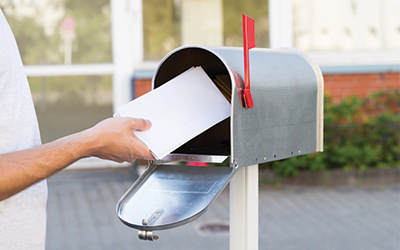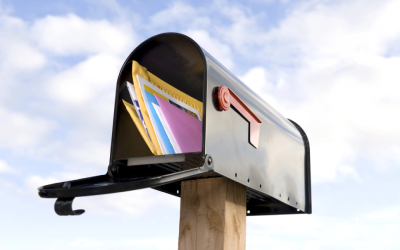In addition to content and an offer, every piece of direct marketing mail contains data crucial to its effectiveness. That is the data which enables the USPS being able to deliver it. Specifically the intended recipient’s name and address. This is where data hygiene comes in. When both are current and in good order, the USPS can successfully complete the delivery.
However, if anything is amiss, such as an incorrect spelling, missing street, or as happens so often the recipient has moved, the mail piece could be Undeliverable-As-Addressed (UAA) mail and become a statistic on the monthly Nixie report. Such mail causes loss of time, effort and money for the Postal Service — and for you, the mailer. The USPS can’t afford to clean up after a mailer’s poor data hygiene. As mail volume for all classes decreases, and as the USPS workforce is reduced over time, the revenue stream and manpower required to somehow make up for deficiencies in addressee data is increasingly strained.
The USPS Is Not The Direct Mail Sanitation Department
We have all heard how the USPS is losing money. Physical mail volume is declining, as is the USPS workforce itself through attrition. In order to ameliorate these effects, the Postal Service is asking the mailing industry to accept more responsibility for the management of mail that either requires additional handling and processing or is undeliverable.
In 2018, the USPS changed the method for measuring Move Update compliance. (As in, are names and addresses accurate and up to date?) to a Census-based approach. The new process provides a more meaningful view of the mailstream versus the old Mail Evaluation Readability Lookup INstrument (MERLIN) based method.
NOTE: Change Of Address errors may now not exceed 0.5 percent of all mailings. If they do, the USPS will bill monthly assessments for every piece over the 0.5 percent error threshold.
To avoid penalties, mailers may perform their own Move Updates. The USPS has published a detailed Guide for doing this. It requires becoming familiar with the Mailer Scorecard. This is a way to determine if a mailing complies with the 2018 Move Update. Once again, the USPS will bill monthly assessments for every piece over the 0.5 percent error threshold. You need to make sure your name and address data is accurate and timely, or risk a penalty, which can reach $0.08 per piece. See how these calculations can cost you. Sounds like implementing the best possible data hygiene is just good business. Alternatively, mailers can engage with a mailing list provider who can provide significant assistance in meeting the new requirements.
More Good Reasons To Focus On Data Hygiene In 2018
According to the U.S. Census Bureau, almost 40 million people change addresses annually. That’s roughly 12% of the population. These include your own good customers. Those who have done business with you and who you definitely want to keep. Remember the Pareto Rule as applied to sales: 80% of revenue comes from 20% of customers. To varying degrees, the cost to acquire new customers is many times greater than the cost of retaining existing ones.
Recipient data errors mean more work for everyone, from correction to re-sending or forwarding. Billions of pieces were either returned or forwarded to a new address in 2018. Pitney Bowes calculates the cost to businesses at up to $25 per piece of returned mail.
Data hygiene includes good address change practices that help mailers avoid sending mail to viable, potential customers but that can’t be delivered. Conversely, how about sending mail to recipients who can’t respond under any circumstances? That’s because they’re either deceased or in prison. Tens of millions of pieces are sent to people who are deceased. And many millions more are sent to prisoners. Your data provider can run your list through the merge/purge or suppression process and remove records for those individuals who are deceased or incarcerated.
List Data Hygiene Is Like Clean Air & Water
Each is essential for survival. Your direct mailing can only thrive when running on clean data. When renting or buying mailing lists, always ask when the records were last updated. Monthly updates are a data hygiene best practice for reputable list brokers.
Begin by asking about Delivery Point Validation. This is a process of verifying that an address is actually deliverable. Determine if the Coding Accuracy Support System (CASS) and the National Change of Address Database (NCOA) are used, and how frequently. CASS certification allows direct mailers to improve the accuracy of the addresses on their list. NCOA is a database maintained by the USPS that contains the names of individuals and companies that have changed addresses within the last four years. The DMA offers valuable wisdom on making use of NCOA Nixie reports to evaluate records.
Inquire about enhanced NCOA services such as ANKLink and Ancillary Change of Address. These help broaden your effort beyond what the USPS itself can provide to ensure deliverability.
Additional, but no less important processes include removing duplicate and near-duplicate names, identifying undeliverable addresses, and fixing incomplete or incorrect addresses through data append.
The de-duplication and merge/purge processes may cost an additional fee on top of the list rental, but are crucial to getting your money’s worth. You’ll pay for fewer but more unique names, and with greater accuracy are most likely to avoid any Undeliverable As Addressed assessments under the Move Update from the USPS.
Data appends too cost an additional fee, but can complete records so they become deliverable and more responsive. Together, these steps help mailings reach their intended target audience and help mailers remain eligible for USPS discounts.




